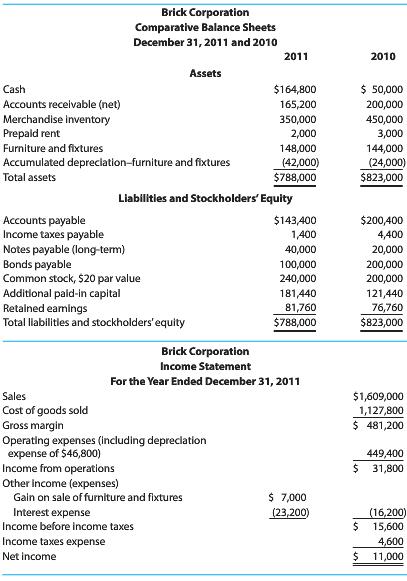Brick Corporations comparative balance sheets as of December 31, 2011 and 2010 and its income statement for
Question:
Brick Corporation’s comparative balance sheets as of December 31, 2011 and 2010 and its income statement for the year ended December 31, 2011, follow.

During 2011, Brick Corporation engaged in the following transactions:
a. Sold at a gain of $7,000 furniture and fixtures that cost $35,600, on which it had accumulated depreciation of $28,800.
b. Purchased furniture and fixtures in the amount of $39,600.
c. Paid a $20,000 note payable and borrowed $40,000 on a new note.
d. Converted bonds payable in the amount of $100,000 into 4,000 shares of common stock.
e. Declared and paid $6,000 in cash dividends.
REQUIRED
1. Using the indirect method, prepare a statement of cash flows for Brick Corporation. Include a supporting schedule of noncash investing transactions and financing transactions.
2. What are the primary reasons for Brick Corporation’s large increase in cash from 2010 to 2011, despite its low net income?
3. Compute and assess cash flow yield and free cash flow for 2011. (Round cash flow yield to one decimal place.) Compare and contrast what these two performance measures tell you about Brick’s ability to generate sufficient cash flow.
Free Cash FlowFree cash flow (FCF) represents the cash a company generates after accounting for cash outflows to support operations and maintain its capital assets. Unlike earnings or net income, free cash flow is a measure of profitability that excludes the...
Step by Step Answer:






